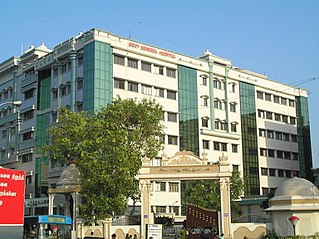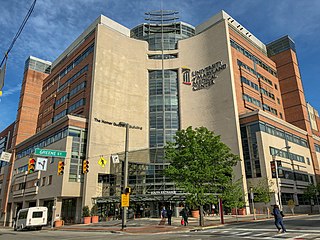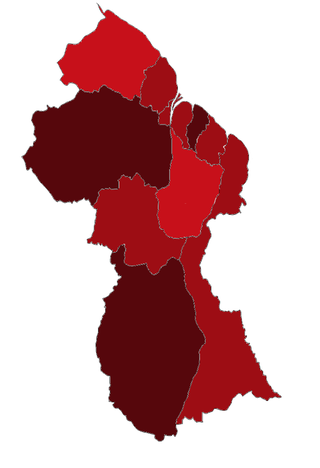
Monash Medical Centre (MMC) is a teaching hospital in Melbourne, Australia. It provides specialist tertiary-level healthcare to the Melbourne's south-east.

The Toronto General Hospital (TGH) is a major teaching hospital in Toronto, Ontario, Canada and the flagship campus of University Health Network (UHN). It is located in the Discovery District of Downtown Toronto along University Avenue's Hospital Row; it is directly north of The Hospital for Sick Children, across Gerrard Street West, and east of Princess Margaret Cancer Centre and Mount Sinai Hospital. The hospital serves as a teaching hospital for the University of Toronto Faculty of Medicine. In 2019, the hospital was ranked first for research in Canada by Research Infosource for the ninth consecutive year.

Dartmouth–Hitchcock Medical Center (DHMC), the flagship campus of the Dartmouth Health system, is the U.S. state of New Hampshire's only academic medical center. DHMC is a 486-inpatient bed hospital and serves as a major tertiary-care referral site for patients throughout northern New England. As an academic medical center, DHMC offers primary, specialty and subspecialty care as well as education and research in partnership with the Geisel School of Medicine at Dartmouth, one of America's oldest medical schools, as well as the Thayer School of Engineering at Dartmouth and The Dartmouth Institute for Health Policy & Clinical Practice.
Sutter Health California Pacific Medical Center (CPMC) is a general medical/surgical and teaching hospital in San Francisco, California. It was created by a merger of some of the city's longest established hospitals and currently operates three acute care campuses.

The Royal Infirmary of Edinburgh (RIE), often known as the Edinburgh Royal Infirmary (ERI), was established in 1729 and is the oldest voluntary hospital in Scotland. The new buildings of 1879 were claimed to be the largest voluntary hospital in the United Kingdom, and later on, the Empire. The hospital moved to a new 900 bed site in 2003 in Little France. It is the site of clinical medicine teaching as well as a teaching hospital for the University of Edinburgh Medical School. In 1960, the first successful kidney transplant performed in the UK was at this hospital. In 1964, the world's first coronary care unit was established at the hospital. It is the only site for liver, pancreas and pancreatic islet cell transplantation and one of two sites for kidney transplantation in Scotland. In 2012, the Emergency Department had 113,000 patient attendances, the highest number in Scotland. It is managed by NHS Lothian.

Rajiv Gandhi Government General Hospital is a major state-owned hospital situated in Chennai, India. The hospital is funded and managed by the state government of Tamil Nadu. Founded in 1664 by the British East India Company, it is the first modern hospital in India. In the 19th century, the Madras Medical College joined it. As of 2018, the hospital receives an average of 12,000 outpatients every day.

St. Louis Children's Hospital is a dedicated pediatric hospital in St. Louis, Missouri, and has a primary service region covering six states. As the pediatric teaching hospital for Washington University School of Medicine, St. Louis Children's Hospital offers nationally recognized programs for physician training and research. The hospital has 402 licensed beds, 3,423 employees, 881 physician staff members, and 1,300 auxiliary members and volunteers. The hospital treats infants, children, teens, and young adults aged 0–21.
TheQueen Elizabeth Hospital (TQEH) is an acute care teaching hospital in the western suburbs of Adelaide, South Australia. It provides a range of health services, including inpatient, outpatient, surgical, emergency and mental health services.

University Hospital is located in Columbia, Missouri. It has the only Level I trauma center and helicopter service in Mid-Missouri, and the only burn intensive care unit in the region. It also has an accredited chest pain center cardiology program and a multidisciplinary digestive disease program. The hospital is affiliated with the University of Missouri and the University of Missouri School of Medicine.

MedStar Washington Hospital Center is the largest private hospital in Washington, D.C. A member of MedStar Health, the not-for-profit Hospital Center is licensed for 926 beds. Health services in primary, secondary and tertiary care are offered to adult and neonatal patients. It also serves as a teaching hospital for Georgetown University School of Medicine.

NYU Langone Health is an academic medical center located in New York City, New York, United States. The health system consists of NYU Grossman School of Medicine and NYU Long Island School of Medicine, both part of New York University (NYU), and more than 300 locations throughout the New York metropolitan area, including six inpatient facilities: Tisch Hospital, Kimmel Pavilion, NYU Langone Orthopedic Hospital, Hassenfeld Children's Hospital, NYU Langone Hospital – Brooklyn and NYU Langone Hospital – Long Island. It is also home to Rusk Rehabilitation. NYU Langone Health is one of the largest healthcare systems in the Northeast, with more than 46,000 employees.

The University of Maryland Medical Center (UMMC) is a teaching hospital with 806 beds based in Baltimore, Maryland, that provides the full range of health care to people throughout Maryland and the Mid-Atlantic region. It gets more than 26,000 inpatient admissions and 284,000 outpatient visits each year. UMMC has approximately 9,050 employees at the UMMC Downtown Campus, as well as 1,300 attending physicians and 950 resident physicians across the Downtown and the Midtown campuses. UMMC provides training for about half of Maryland's physicians and other health care professionals. All members of the medical staff are on the faculty of the University of Maryland School of Medicine.
Surgical Outcomes Analysis & Research, SOAR, is a research laboratory of the Department of Surgery at Boston University School of Medicine and Boston Medical Center with expertise in outcomes research. SOAR investigates surgical diseases and perioperative outcomes. The group focuses on pancreatic cancer, other gastrointestinal and hepatobiliary malignancies, vascular disease, and transplant surgery. SOAR's goal is to examine quality, delivery, and financing of care in order to have an immediate impact on patient care and system improvements. The group members utilize national health services and administrative databases, as well as institutional databases, to investigate and to address factors contributing to disease outcomes and healthcare disparities.

Sharp Memorial Hospital is a hospital in San Diego, California, in the United States. Opened in 1955, Sharp Memorial is Sharp HealthCare's largest hospital and the system's only designated Level II trauma center. Located in Serra Mesa, the hospital has 656 beds, including 48 for intensive-care services.

Prince Sultan Military Medical City (PSMMC) also known as Riyadh Armed Forces Hospital is located in Riyadh City, the capital of Saudi Arabia, considered one of the most advanced centres in the Middle East. It is located in the heart of Riyadh. At a distance of approximately 20 kilometres (12 mi) from the city centre and easily accessible to the general population. PSMMC is part of the Medical Services Department (MSD) of the Ministry of Defense (MOD).

The Dr. Horacio E. Oduber Hospital is a 320-bed hospital on the island of Aruba, founded in 1976 by the non-profit foundation Stichting Ziekenverpleging Aruba. It is the one of two hospitals on the island.
Compared with other neighbouring countries, Guyana ranks poorly in regard to basic health indicators. Basic health services in the interior are primitive to non-existent, and some procedures are not available at all. Although Guyana's health profile falls short in comparison with many of its Caribbean neighbours, there has been remarkable progress since 1988, and the Ministry of Health is working to upgrade conditions, procedures, and facilities. Many Guyanese seek medical care in the United States, Trinidad and Tobago or Cuba.

Kuala Lumpur Hospital is the largest Malaysian government-owned public general hospital in Kuala Lumpur, the capital city of Malaysia. Founded in 1870, HKL is a not-for-profit institution and serves as the flagship hospital of the Malaysian public healthcare system. This hospital serves as a tertiary and referral hospital. It is located on 150 acres of prime land in the city with 84 wards and 2,300 beds, making it one of the largest hospitals in the world. More than 90 per cent of the beds in HKL are allocated for subsidized patients, providing access to an internationally established standard of affordable healthcare.
Muhimbili National Hospital is a 1500-bed public teaching hospital located in Upanga West ward of Ilala District in Dar es Salaam Region of Tanzania. It is the national referral hospital as well as academic and research facility for the Muhimbili University of Health and Allied Sciences. It offers speciality care across the spectrum of clinical medicine. About 40% of its beds are for private patients. The hospital employs around 2705 workers including 328 doctors and 946 nurses.

The COVID-19 pandemic in Guyana was a part of the worldwide pandemic of coronavirus disease 2019 caused by severe acute respiratory syndrome coronavirus 2. The virus was confirmed to have reached Guyana on 11 March 2020. The first case was a woman who travelled from New York, a 52-year-old woman with underlying health conditions, including diabetes and hypertension. The woman died at the Georgetown Public Hospital.















